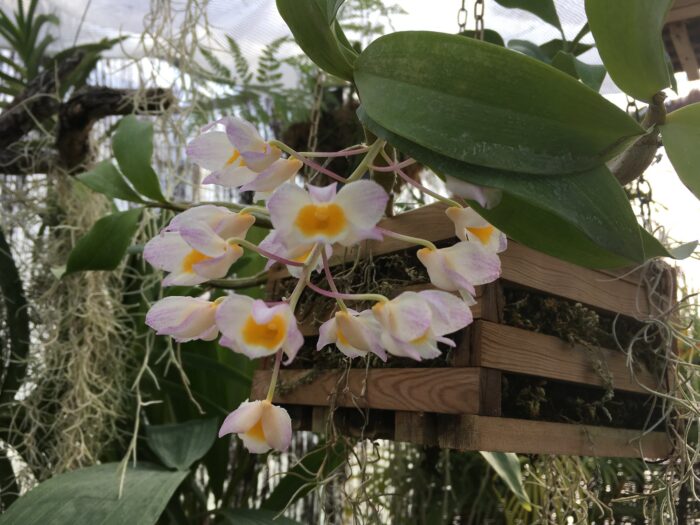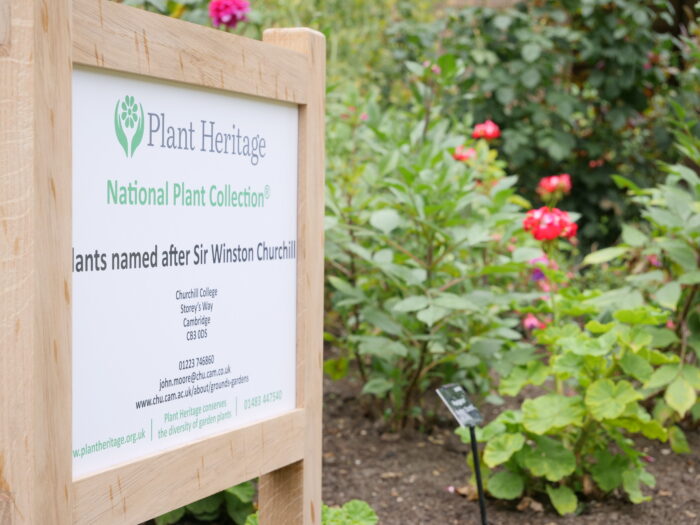Grounds and gardens at Churchill College
The fields are amazing in the summer!
Lily, Modern & Medieval Languages Student
Our grounds and gardens are truly exceptional, and make the most of the openness and space our 42 acres provides.
As well as sports fields, floral borders and mature trees, our grounds include a mini arboretum, fruit orchards, an orchid collection, allotments, meadows, copses, herb gardens and mores. Biodiversity is a prime consideration on our site, so as well as beautifully tended borders, we also make space for wilder areas, to allow many kinds of wildlife and plant life to thrive.
Fields
Churchill College is full of green spaces. Our lawns and sports fields are immediately obvious, while others are more hidden on our campus. You’re welcome to walk on and use our lawns, and our sports fields can be booked by College members. The perimeter of our grounds are a popular walk, or route to run.
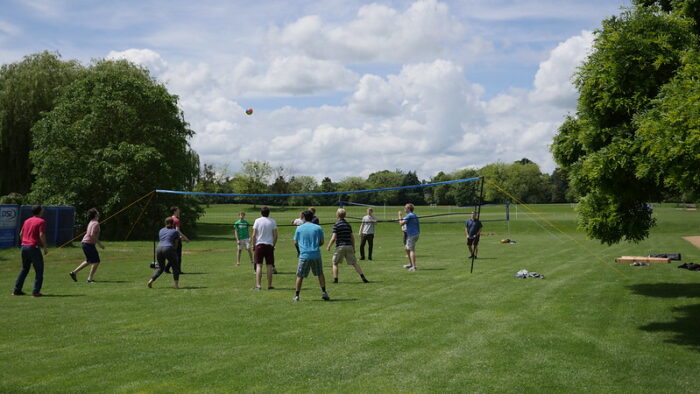
Xiaotian Fu Garden
The Xiaotian Fu Garden is located near 72 Storey’s Way, part of the College’s postgraduate accommodation.
A secluded, private space, it provides a tranquil and beautiful area for students and Fellows to work outside whilst still being close to the main College buildings. It is named after Ms Xiaotian Fu (PG06) who, in 2016 pledged a series of generous gifts.
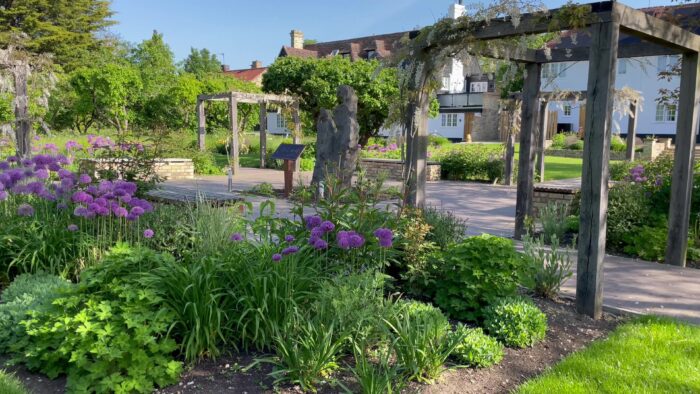
Trees
There are almost 1000 trees on site. Many host mistletoe, which shows that the air is clean as Mistletoe won’t grow in areas of pollution. Trees planted around the site range from spreading oak trees to flowering cherries and magnolias.
The arboretum next to the Chapel is a peaceful woodland area to walk through especially in spring with stunning shows of snowdrops and 20,000 daffodils.
For further information please see the tree map in our Garden Guide, available from the Porter’s Lodge. This includes trees planted by famous or important College people.
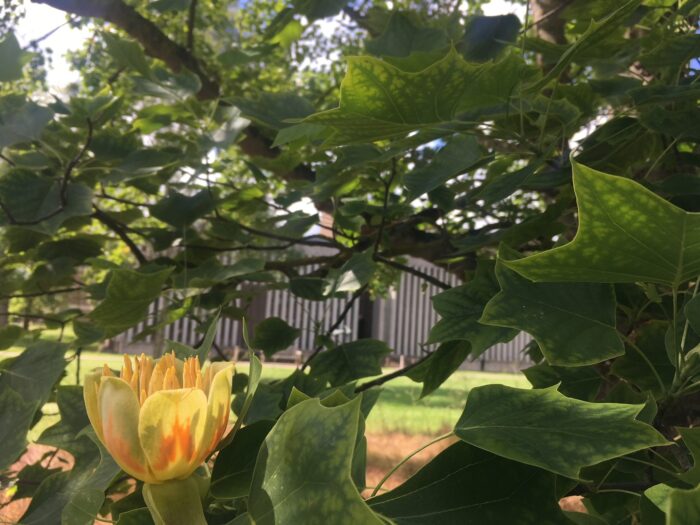
Orchid House
n 2013 Native Bee Orchids were spotted growing in the College for the first time and they have flowered annually ever since. Dr Frank Maine (G60) (1937–2018) was visiting the College when the Bee Orchids were first spotted and due to his life-long passion for orchids set up an orchid fund to grow orchids under glass. The College currently has approximately 250 different orchids growing in its glasshouse and the collection is still expanding. The orchid house opening hours vary; contact Kath if you would like to visit.
Grow your Own
The Wellbeing Seed Library provides free seeds for students and families to use in the student garden. Seeds currently include basil, chives, parsley, spinach, lettuce, rocket, radish, mizuma, nasturtium, corn, leek, spring onions, courgette, carrot, pak choi, tomatoes, beetroot, turnip, celery, sweet pea and sunflower.
You can find the Seed Library in the College Library, in the entrance foyer of the Bracken reading room. (You do not need a University Card to access this area.) You can plant them in the student gardening club greenhouse or some raised beds that can be used by students and families, located near the postgraduate accommodation at 70 Storey’s Way, across from Churchill Road.
Compost, pots, a watering can and plant labels are kept in the greenhouse for student use, and the College gardeners will be on hand for any advice.
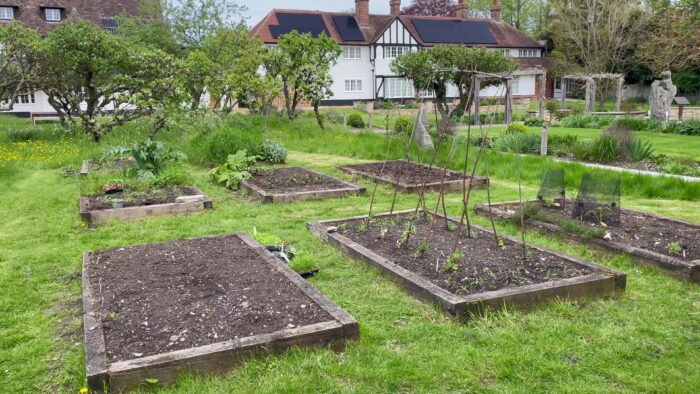
Garden guide and history
If you want to know more about our gardens, Paula Laycock (former Registrar) and John Moore (Head of Grounds & Gardens) have written a Garden Guide which includes a potted history, a garden map and a guided tour of the grounds and gardens. In A5 format with 35 pages, it is on sale at the Porter’s Lodge for £3.
For those who would like to know more about the history, Portrait of a Landscape is a 200 page fully illustrated book with 205 photos which chronicles the development of the grounds and gardens since 1959 to the present day. In landscape format, it is on sale for £20, also available at the Porter’s Lodge.
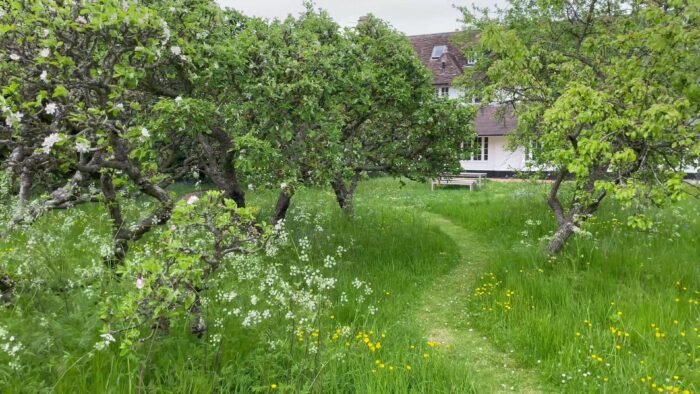
Sustainability
Churchill College Grounds & Gardens team have worked hard to develop the biodiversity on site. “Nature friendly policies” such as including beehives on site to support pollinators, not using total weedkillers and not spraying the lawns has encouraged more biodiversity. A recent survey of plants on site found almost 300 different species, excluding planted borders. Around 15 species are on the county Register of Plants of Conservation Concern.
Churchill College has also got Bronze recognition for being a Hedgehog Friendly Campus. We have resident foxes, badgers, bats, owls and herons on site.
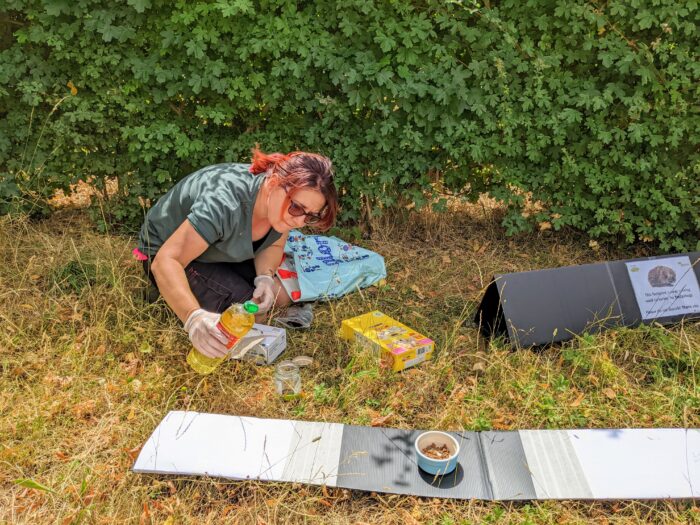
National Plant Collection
In 2021, The College’s Winston Churchill Border was accredited as a National Collection through Plant Heritage.
In 2010 the College arranged for a special rose to be bred as part of its 50th anniversary celebrations. Named Rosa ‘The Churchill Rose’, it is a lovely rose with apricot flowers and a delicate scent. The rose can be found in the gardens of 10 Downing Street, Chartwell House and Cambridge Botanic Garden but the College wanted to find a place to grow it on site so that its story could be retained. This led to the creation of the Sir Winston Churchill border in the Master’s and Fellows’ garden, which provided an opportunity to research and grow all of the plants named after Sir Winston Churchill. There are 27 named varieties and the College aims to collect all of them.
Varieties within the border include the following:
- Rosa ‘The Churchill Rose’ (Bred 2010)
- Rosa ‘Sir Winston Churchill’ (Bred 1955)
- Dahlia ‘Winston Churchill’
- Fuchsia ‘Winston Churchill’
- Hermerocallis ‘Winston Churchill’
- Hyacinthus orientalis ‘Churchill’
- Malus ‘Winston’
- Pelargonium ‘Winston Churchill’
- Saxifraga ‘Winston Churchill’
- Saxifraga ‘Winston Churchill Variegata’
- Symphyotrichum novi-belgii ‘Winston Churchill’
- Narcissus ‘Winston Churchill’
- Lathyrus odoratus Winston Churchill (sweet pea)
- Chamaecyparis lawsoniana ‘Winston Churchill’
- Rhododendron ‘Winston Churchill’ Azalea mollis
